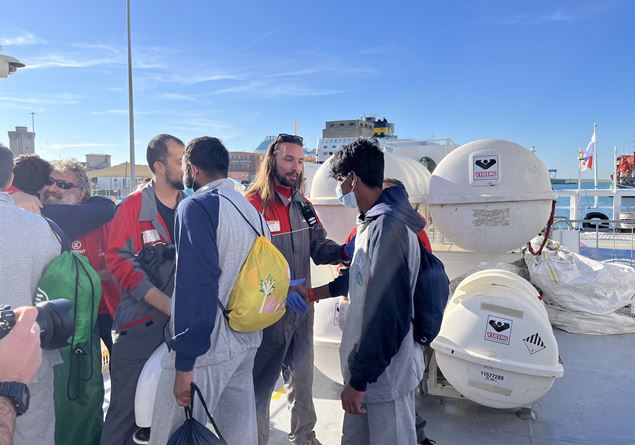
by Lorenzo Rossi
In the United States, faith is a central element not only in daily life, but also in political decisions. In fact, more than 50% of Americans attribute crucial importance to religion, confirming the United States as one of the most religious countries in the Western world. As the presidential elections between Kamala Harris and Donald Trump approach, the influence of faith on voting choices appears more relevant than ever.
Christians: a decisive voting block
Research reveals that religion has a significant impact on political preferences, particularly among those who regularly attend religious services. According to a survey by the Pew Research Center reported by the French periodical La Croix, 62% of voters who attend a religious service at least once a month tend to vote for the Republican Party, regardless of confession. These Christian voters also show a higher turnout than the national average, with a lower abstention rate of 17% compared to 30% of all voters, according to data from the Baker Institute.
Protestants, who constitute one of the most influential groups, predominantly support the Republican Party, with the GOP collecting 59% of voting intentions, while the Democrats are preferred by 38% of voters. Within this group, white evangelicals stand out for their unity: 85% of them support Trump. However, a change emerges in the priorities: if in 2020 abortion was the main issue for 63% of these voters, in 2024 the issue of immigration is in the foreground, with 65% of the preferences.
In the Protestant community, however, the African-American component follows a different line: 86% of these voters support Harris. Even among white Protestants belonging to “mainline” churches, i.e. traditional non-evangelical ones, a majority of 58% supports Trump, compared to 41% who choose Harris.
The Catholic vote: a divided community
Catholics, who represent 20% of the population, are more balanced in their electoral preferences, with 52% support for Republicans and 44% for Democrats. This bloc, traditionally close to the Democratic Party, has progressively moved closer to the Republicans over the last twenty years. Among white Catholics, support for Trump has reached 61%, while Hispanics, while remaining closer to Democrats, show a slight shift to the right, with 35% support for Trump compared to 28% in 2004.
Religious minorities: small numbers, big impact
Religious minorities also play a significant role in elections. American Jews, equal to 2% of the population, traditionally oriented towards the left, continue to support the Democrats: this year, 63% of Jewish voting intentions go to Kamala Harris. However, the Orthodox communities, growing rapidly thanks to a high birth rate, support Trump in the majority, representing about 29% of the Jewish electorate. Their significant presence in Florida has helped consolidate the state’s Republican orientation, a notable change compared to 2020.
Despite their small number, the Muslim electorate could also prove decisive. In Michigan, where around 250,000 Muslims live, many of whom have Lebanese and Palestinian origins, the detachment from the Democratic Party is growing, perceived as too close to Israel in managing the conflict in the Middle East, in particular with respect to the war in Gaza. A significant percentage, 40%, intend to vote for Jill Stein of the Green Party, while 18% prefer Trump and only 12% support Harris. With Michigan in the balance, this group could make a difference: In 2020, Biden won here by a margin of just 15,000 votes.
The main themes: economy and cost of living
While the influence of religion is strong, the cost of living and access to housing remain the main concerns for many voters. This is highlighted by research by the Public Religion Research Institute, which underlines how priority is given to the economy even among believers. A survey by the National Catholic Reporter on Catholic voters in swing states confirms this trend: economic issues occupy first place, while abortion is only eighth.
Finally, since 2010 there has been a constant increase in Americans who do not identify with any religion, the so-called “nones”, who today represent 22% of the population. This group, particularly present among young people, tends to orient itself politically to the left, with 62% of voting intentions for Harris in the next presidential election.
This year too, therefore, religion confirms itself as an important lens for reading the electoral choices of Americans, significantly influencing one of the most divisive elections in recent years.







